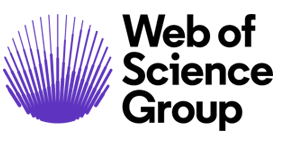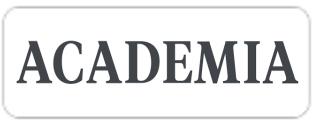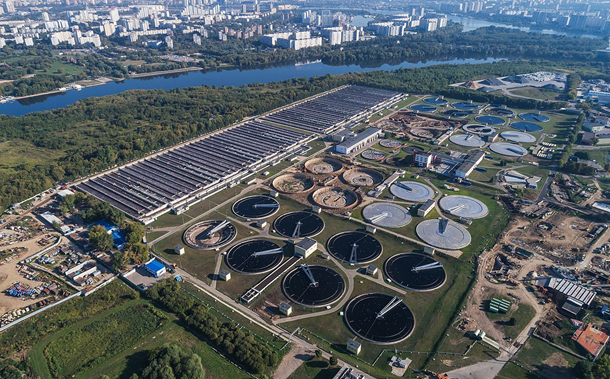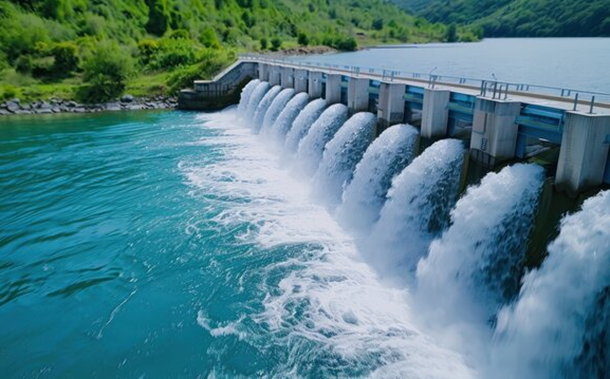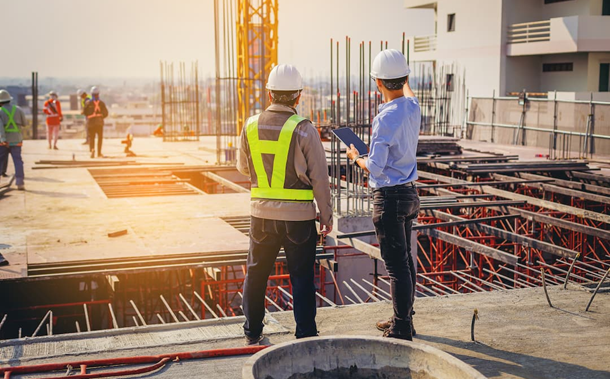Evaluation and Restoration of Corrosion-Damaged Post-Tensioned Concrete Structures
Downloads
Doi:10.28991/CEJ-2024-010-12-02
Full Text:PDF
Downloads
[2] Menga, A., Kanstad, T., & Cantero, D. (2022). Corrosion induced failures of post-tensioned bridges. Norwegian University of Science and Technology, Trondheim, Norway.
[3] Kamalakannan, S., Thirunavukkarasu, R., Pillai, R. G., & Santhanam, M. (2018). Factors affecting the performance characteristics of cementitious grouts for post-tensioning applications. Construction and Building Materials, 180, 681–691. doi:10.1016/j.conbuildmat.2018.05.236.
[4] Li, H., Yang, Y., Wang, X., & Tang, H. (2023). Effects of the position and chloride-induced corrosion of strand on bonding behavior between the steel strand and concrete. Structures, 58, 105500. doi:10.1016/j.istruc.2023.105500.
[5] Santarsiero, G., Picciano, V., Masi, A., & Ventura, G. (2024). Retrofit of PRC bridges by external post-tension under different corrosion scenarios. Bridge Maintenance, Safety, Management, Digitalization and Sustainability, 571–579, CRC Press, Boca Raton, United States. doi:10.1201/9781003483755-65.
[6] Emmons, P. H., & Vaysburd, A. M. (1997). Corrosion protection in concrete repair: myth and reality. Concrete International, 19(3), 47–56.
[7] Vennesland, í˜., Raupach, M., & Andrade, C. (2007). Recommendation of Rilem TC 154-EMC: "Electrochemical techniques for measuring corrosion in concrete””measurements with embedded probes. Materials and Structures, 40(8), 745–758. doi:10.1617/s11527-006-9219-4.
[8] Carsana, M., & Bertolini, L. (2016). Characterization of segregated grout promoting corrosion of posttensioning tendons. Journal of Materials in Civil Engineering, 28(6), 04016009. doi:10.1061/(ASCE)MT.1943-5533.0001451.
[9] Andrade, C. (2023). Role of Oxygen and Humidity in the Reinforcement Corrosion. Proceedings of the 75th RILEM Annual Week 2021. RW 2021, RILEM Bookseries, 40. Springer, Cham, Switzerland. doi:10.1007/978-3-031-21735-7_35.
[10] Shakouri, M., Abraham, O.F., Vaddey, N.P. (2024). Assessing Passivation and Corrosion of Post-tensioning Strand in Grouts Under Chloride Salt Exposure. Smart & Sustainable Infrastructure: Building a Greener Tomorrow. ISSSI 2023. RILEM Bookseries, 48, Springer, Cham, Switzerland. doi:10.1007/978-3-031-53389-1_83.
[11] Tanaka, Y., Kawano, H., Watanabe, H., & Kimura, T. (2001). Chloride-induced deterioration and its influence on load carrying capacity of post-tensioned concrete bridges. 3rd International Conference on Concrete under Severe Conditions of Environment and Loading (CONSEC'01), 18-20 June, 2001, Vancouver, Canada.
[12] Minh, H., Mutsuyoshi, H., & Niitani, K. (2007). Influence of grouting condition on crack and load-carrying capacity of post-tensioned concrete beam due to chloride-induced corrosion. Construction and Building Materials, 21(7), 1568–1575. doi:10.1016/j.conbuildmat.2005.10.004.
[13] Lee, S. K. (2022). Corrosion-Induced Durability Issues and Maintenance Strategies for Post-Tensioned Concrete Bridges. No. FHWA-HRT-22-090, Office of Infrastructure Research and Development, Federal Highway Administration, McLean, United States.
[14] Carsana, M., & Bertolini, L. (2015). Corrosion failure of post-tensioning tendons in alkaline and chloride-free segregated grout: a case study. Structure and Infrastructure Engineering, 11(3), 402–411. doi:10.1080/15732479.2014.887736.
[15] Bertolini, L., Elsener, B., Pedeferri, P., Redaelli, E., & Polder, R. B. (2013). Corrosion of steel in concrete: prevention, diagnosis, repair. John Wiley & Sons, Hoboken, United States. doi:10.1002/9783527651696.
[16] Constantinescu, V., Bogus, G. V., Taran, R. G., & Carcea, I. (2014). New composite materials that reduce the effect of reinforcement corrosion. Advanced Materials Research, 837, 265–270. doi:10.4028/www.scientific.net/AMR.837.265.
[17] Wootton, I. A., Spainhour, L. K., & Yazdani, N. (2003). Corrosion of Steel Reinforcement in Carbon Fiber-Reinforced Polymer Wrapped Concrete Cylinders. Journal of Composites for Construction, 7(4), 339–347. doi:10.1061/(asce)1090-0268(2003)7:4(339).
[18] Al-Mosawe, D., Neves, L., & Owen, J. (2022). Reliability analysis of deteriorated post-tensioned concrete bridges: The case study of Ynys-y-Gwas bridge in UK. Structures, 41, 242–259. doi:10.1016/j.istruc.2022.04.094.
[19] Li, F., Yuan, Y., & Li, C. Q. (2011). Corrosion propagation of prestressing steel strands in concrete subject to chloride attack. Construction and Building Materials, 25(10), 3878–3885. doi:10.1016/j.conbuildmat.2011.04.011.
[20] Wang, L., Hu, Z., Yi, J., Dai, L., Ma, Y., & Zhang, X. (2020). Shear Behavior of Corroded Post-Tensioned Prestressed Concrete Beams with Full/Insufficient Grouting. KSCE Journal of Civil Engineering, 24(6), 1881–1892. doi:10.1007/s12205-020-1777-4.
[21] Joyklad, P., Ali, N., Chaiyasarn, K., Suparp, S., & Hussain, Q. (2022). Time-dependent behavior of full-scale precast post-tensioned (PCPT) girders: Experimental and finite element analysis. Case Studies in Construction Materials, 17, e01310. doi:10.1016/j.cscm.2022.e01310.
[22] Green, W. K., Katen, J. B., & McDonald, D. B. (2021). Long Life Chloride Affected Concrete Structures–Some Corrosion Mechanistic Considerations. NACE Corrosion, April, Virtual.
[23] Permeh, S., & Lau, K. (2023). Assessment of Post-Tensioned Grout Durability by Accelerated Robustness and Corrosion Testing. Construction Materials, 3(4), 449–461. doi:10.3390/constrmater3040029.
[24] Joseline, D., Pillai, R. G., & Neelakantan, L. (2021). Initiation of Stress Corrosion Cracking in Cold-Drawn Prestressing Steel in Hardened Cement Mortar Exposed to Chlorides. Corrosion, 77(8), 906–922. doi:10.5006/3730.
[25] Broomfield, J. P. (2011). Corrosion of Steel in Concrete. Uhlig's Corrosion Handbook, 633–647, CRC Press, London, United Kingdom. doi:10.1002/9780470872864.ch49.
[26] MichaŠ‚ek, J., & Gago, F. (2024). Service Life of Pre-Tensioned Concrete Structures in a Chloride Environment on the Example of an Aluminium Foundry Building. Materials, 17(12), 2985. doi:10.3390/ma17122985.
[27] Liu, X., Zhang, W., Sun, P., & Liu, M. (2022). Time-Dependent Seismic Fragility of Typical Concrete Girder Bridges under Chloride-Induced Corrosion. Materials, 15(14), 5020. doi:10.3390/ma15145020.
[28] Yang, Z.-N., Lu, Z.-H., Li, C.-Q., Liu, X., & Song, X. (2024). Effect of grouting quality on flexural behavior of corroded post-tensioned concrete T-beams. Case Studies in Construction Materials, 21, e03766. doi:10.1016/j.cscm.2024.e03766.
[29] Mehta, P. K. (2006). Concrete: Microstructure, Properties, and Materials. McGraw-Hill, New York, United States.
[30] Yu, Q. Q., Gu, X. L., Zeng, Y. H., & Zhang, W. P. (2022). Flexural behavior of Corrosion-Damaged prestressed concrete beams. Engineering Structures, 272, 114985. doi:10.1016/j.engstruct.2022.114985.
[31] Giriraju, R., Sengupta, A. K., & Pillai, R. G. (2022). Tensile Behaviour of Corroded Strands in Prestressed Concrete Systems. Journal of The Institution of Engineers (India): Series A, 103(3), 867–879. doi:10.1007/s40030-022-00656-y.
[32] Bentur, A. (1997). Steel Corrosion in Concrete. CRC Press, London, United Kingdom. doi:10.1201/9781482271898.
[33] Wang, Y., Pan, Z., Zhao, C., & Zeng, B. (2023). Long-term behavior of prestressed concrete industrial buildings in chloride-based industrial environments. Journal of Building Engineering, 76, 107344. doi:10.1016/j.jobe.2023.107344.
[34] Lau, K., Permeh, S., & Lasa, I. (2023). Corrosion of prestress and posttension reinforced concrete bridges. Corrosion of Steel in Concrete Structures, 81–105. doi:10.1016/B978-0-12-821840-2.00013-4.
[35] HoŠ‚a, J., Bień, J., Sadowski, L., & Schabowicz, K. (2015). Non-destructive and semi-destructive diagnostics of concrete structures in assessment of their durability. Bulletin of the Polish Academy of Sciences: Technical Sciences, 63(1), 87–96. doi:10.1515/bpasts-2015-0010.
[36] Geophysical Survey Systems, Inc. (2017). RADAN 7. Geophysical Survey Systems, Inc., Nashua, United States.
[37] BS EN 14630:2006. (2006). Products and systems for the protection and repair of concrete structures - test methods - determination of carbonation depth in hardened concrete by the phenolphthalein method. British Standard Institute (BSI), London, United Kingdom.
[38] RILEM CPC-18. (1988). Measurement of Hardened Concrete Carbonation Depth. RILEM 14-20, Descartes, France.
[39] ASTM C876-22b. (2022). Standard Test Method for Corrosion Potentials of Uncoated Reinforcing Steel in Concrete. ASTM International, Pennsylvania, United States. doi:10.1520/C0876-22B.
[40] BS EN 12504-1:2009. (2009). Testing concrete in structures. Cored specimens. Taking, examining, and testing in compression. British Standard Institute (BSI), London, United Kingdom.
[41] BS 1881-124:2015. (2015). Part 124: Methods for analysis of hardened concrete. British Standard Institute (BSI), London, United Kingdom.
[42] BS 4449:2005+A3:2016. (2016). Steel for the reinforcement of concrete. Weldable reinforcing steel. Bar, coil and decoiled product. British Standard Institute (BSI), London, United Kingdom.
[43] ASTM C1202-19. (2012). Standard Test Method for Electrical Indication of Concrete's Ability to Resist Chloride Ion Penetration. ASTM International, Pennsylvania, United States. doi:10.1520/C1202-19.
[44] Glass, G. K., Hassanein, A. M., & Buenfeld, N. R. (2001). Cathodic protection afforded by an intermittent current applied to reinforced concrete. Corrosion Science, 43(6), 1111–1131. doi:10.1016/S0010-938X(00)00133-5.
[45] Hansson, C. M. (1984). Comments on electrochemical measurements of the rate of corrosion of steel in concrete. Cement and Concrete Research, 14(4), 574–584. doi:10.1016/0008-8846(84)90135-2.
[46] Permeh, S., & Lau, K. (2022). Review of Electrochemical Testing to Assess Corrosion of Post-Tensioned Tendons with Segregated Grout. Construction Materials, 2(2), 70–84. doi:10.3390/constrmater2020006.
[47] Tuutti, K. (1982). Corrosion of steel in concrete. Swedish Cement and Concrete Research Institute, Stockholm, Sweden.
[48] Poursaee, A., & Hansson, C. M. (2009). Potential pitfalls in assessing chloride-induced corrosion of steel in concrete. Cement and Concrete Research, 39(5), 391–400. doi:10.1016/j.cemconres.2009.01.015.
[49] ACI 228.1R-19. (2019). Report on Methods for Estimating In-Place Concrete Strength. American Concrete Institute (ACI), Michigan, United States.
[50] ACI RAP Bulletin 5. (2003). Surface Repair using Form-and-Pump Techniques. American Concrete Institute (ACI), Michigan, United States.
[51] ACI RAP Bulletin 6. (2003). Vertical and Overhead Spall Repair by Hand Application. American Concrete Institute (ACI), Michigan, United States.
- Authors retain all copyrights. It is noticeable that authors will not be forced to sign any copyright transfer agreements.
- This work (including HTML and PDF Files) is licensed under a Creative Commons Attribution 4.0 International License.![]()


